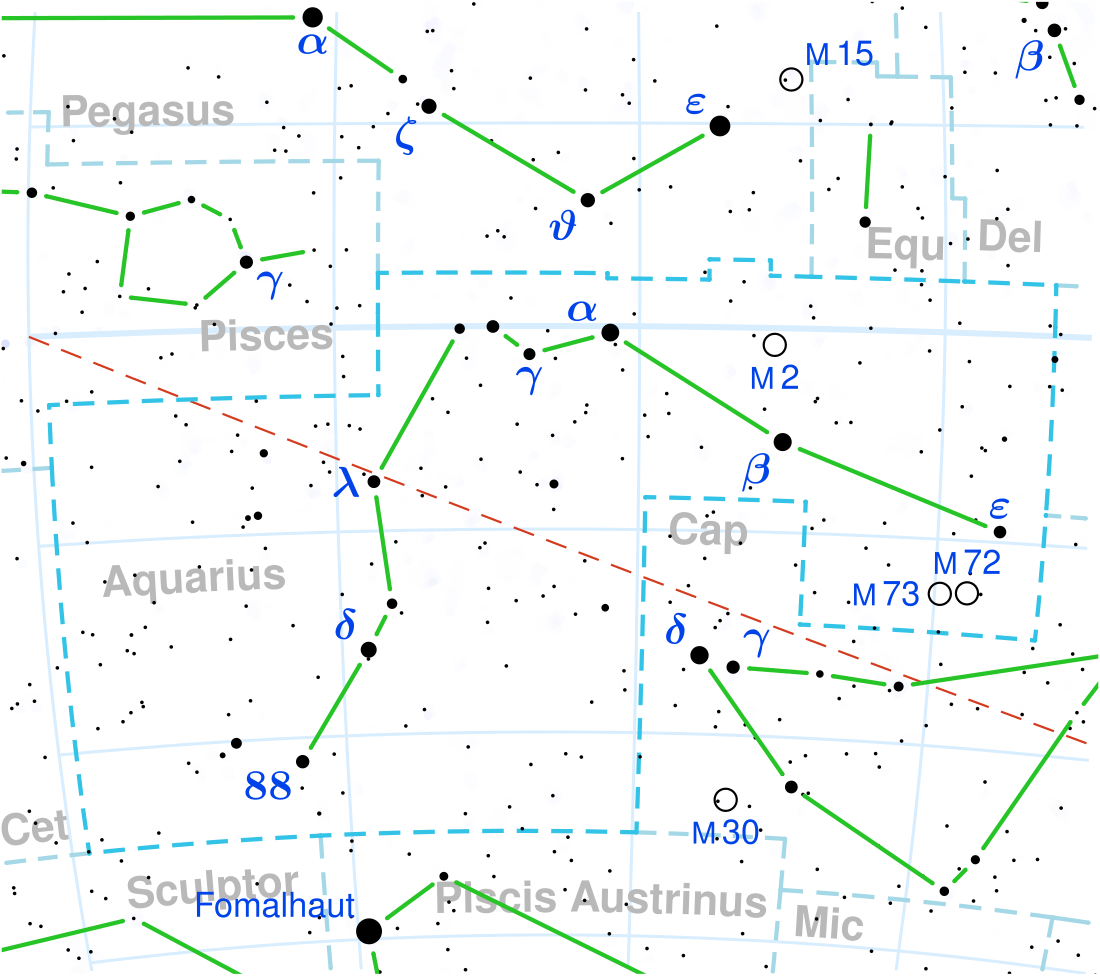Top Qs
Timeline
Chat
Perspective
Theta Aquarii
Star in the constellation Aquarius From Wikipedia, the free encyclopedia
Remove ads
Theta Aquarii is a star in the equatorial constellation of Aquarius. Its identifier is a Bayer designation that is Latinized from θ Aquarii, and abbreviated Tet Aqr or θ Aqr, respectively. It has the official name Ancha, which is pronounced /ˈæŋkə/.[7] Visible to the naked eye at an apparent visual magnitude of 4.175,[2] it is located at a distance of around 191 light-years (59 parsecs) from the Sun.[8] The star is drifting closer to the Sun with a radial velocity of −14 km/s.[4] Since it is near the ecliptic it can be occulted by the Moon,[9] or very rarely by planets.
Remove ads
Nomenclature
θ Aquarii (Latinised to Theta Aquarii) is the star's Bayer designation.
It bore the traditional name Ancha; Medieval Latin for "the haunch". In 2016, the International Astronomical Union organized a Working Group on Star Names (WGSN)[10] to catalogue and standardize proper names for stars. The WGSN approved the name Ancha for this star on 12 September 2016, and it is now so included in the List of IAU-approved Star Names.[7]
In Chinese, 泣 (Qì), meaning Weeping, refers to an asterism consisting of Theta Aquarii and Rho Aquarii.[11] Consequently, the Chinese name for Theta Aquarii itself is 泣二 (Qì èr, English: the Second Star of Weeping).[12] Possibly, the name Lei, meaning "tears (weeping)" in Chinese, derives from the Chinese name for this star.[13]
Remove ads
Properties
Ancha belongs to the spectral class G8 with a luminosity class of III–IV suggesting that, at an age of 437[3] million years, this star is part way between the subgiant and giant stages of its evolution. Estimates of the star's mass range from 2.39[5] to 2.78[3] times the Sun's mass, with a radius of about 12[4] times that of the Sun. It is radiating from 72[4] to 83[3] times as much luminosity as the Sun from its enlarged outer envelope at an effective temperature of 4,864 K.[4] At this heat, the star glows with the yellow hue of a G-type star.[14]
Remove ads
References
External links
Wikiwand - on
Seamless Wikipedia browsing. On steroids.
Remove ads

